-
 bitcoin
bitcoin $109667.069529 USD
-3.03% -
 ethereum
ethereum $3936.685804 USD
-4.07% -
 tether
tether $1.000493 USD
0.01% -
 xrp
xrp $2.771823 USD
-4.74% -
 bnb
bnb $957.805027 USD
-5.34% -
 solana
solana $196.735100 USD
-6.68% -
 usd-coin
usd-coin $0.999727 USD
-0.01% -
 dogecoin
dogecoin $0.227355 USD
-5.12% -
 tron
tron $0.335205 USD
-0.81% -
 cardano
cardano $0.779256 USD
-3.59% -
 ethena-usde
ethena-usde $0.999900 USD
-0.06% -
 hyperliquid
hyperliquid $42.492095 USD
-6.61% -
 chainlink
chainlink $20.501853 USD
-4.34% -
 avalanche
avalanche $28.952606 USD
-11.21% -
 stellar
stellar $0.356038 USD
-3.93%
What is Byzantine Fault Tolerance?
Byzantine Fault Tolerance (BFT) is crucial for cryptocurrencies, enabling consensus despite malicious actors. Complex BFT algorithms, like PBFT and Paxos, ensure agreement on a shared ledger, though implementation presents computational challenges.
Mar 06, 2025 at 02:42 pm
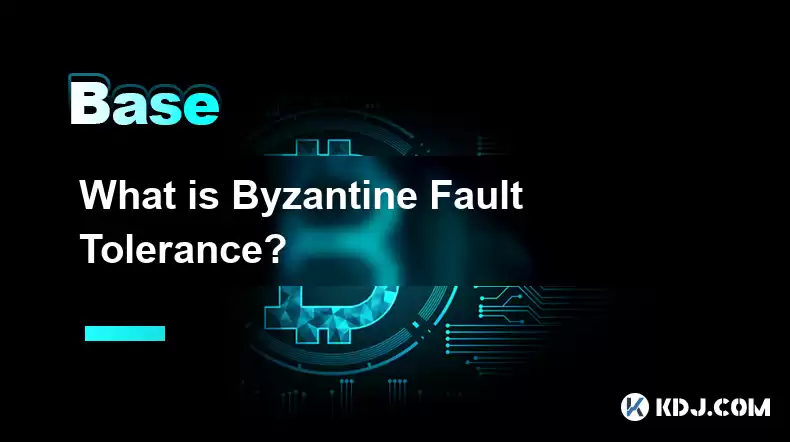
- Byzantine Fault Tolerance (BFT) is a crucial concept in distributed systems, particularly relevant to cryptocurrencies.
- It addresses the challenge of maintaining consensus in a system where some participants might be malicious or faulty.
- BFT algorithms enable a network to reach agreement despite the presence of these Byzantine failures.
- Practical BFT implementations are complex and computationally intensive.
- Different consensus mechanisms in cryptocurrencies employ variations of BFT principles.
Byzantine Fault Tolerance (BFT) is a crucial property of distributed systems designed to operate reliably even when some of their components behave erratically or maliciously. This is especially important in the context of cryptocurrencies, where a shared, immutable ledger must be maintained despite the potential for dishonest actors within the network. The term "Byzantine" refers to the unpredictable and potentially deceptive behavior of faulty nodes, mirroring the complexity of the Byzantine Empire's internal politics.
The Challenge of Byzantine FailuresImagine a group of generals trying to coordinate an attack. Some generals might be traitors, sending conflicting or misleading messages. BFT algorithms address this problem by ensuring that honest participants can reach agreement despite the presence of these "Byzantine" failures. A simple majority vote wouldn't suffice, as malicious actors could manipulate the outcome.
How BFT Works in CryptocurrenciesBFT algorithms work by employing intricate protocols that allow honest nodes to identify and disregard malicious input. These protocols typically involve multiple rounds of communication and verification steps, ensuring that only valid transactions are added to the blockchain. The exact implementation varies across different consensus mechanisms.
Practical BFT AlgorithmsSeveral practical BFT algorithms exist, each with its strengths and weaknesses. These algorithms often rely on complex cryptographic techniques and sophisticated consensus mechanisms. Some popular examples include Practical Byzantine Fault Tolerance (PBFT), which is known for its relatively high throughput but scalability limitations, and Paxos, another prominent algorithm that is less centralized but more complex to implement.
BFT and Cryptocurrency Consensus MechanismsDifferent cryptocurrencies employ different consensus mechanisms, each embodying aspects of BFT. Proof-of-Work (PoW), for example, uses the computational power of miners to achieve a form of implicit BFT. While not a direct BFT algorithm, the difficulty of manipulating the PoW process makes it resistant to attacks by malicious actors.
Proof-of-Stake (PoS) mechanisms also address the BFT problem by leveraging the economic incentives of validators. Validators who misbehave risk losing their staked cryptocurrency, creating a strong incentive for honest behavior and indirectly achieving a form of BFT. Delegated Proof-of-Stake (DPoS) further refines this approach by allowing token holders to elect validators.
The Importance of BFT in Maintaining SecurityBFT is vital for maintaining the security and integrity of cryptocurrencies. Without robust BFT mechanisms, a blockchain could be vulnerable to various attacks, such as double-spending or 51% attacks. BFT algorithms ensure that the network remains resilient even when faced with malicious or faulty nodes, preserving the trust and reliability of the system.
Implementing BFT: A Step-by-Step Overview (Illustrative Example)While specific implementations vary greatly, here's a simplified, illustrative overview of steps involved in a BFT consensus process:
- Proposal: A node proposes a new block of transactions.
- Pre-prepare: Nodes verify the proposed block and signal agreement.
- Prepare: Nodes commit to the proposal based on the pre-prepare phase.
- Commit: Nodes finalize the block after receiving sufficient confirmations.
This is a highly simplified example; real-world BFT implementations are far more intricate. They usually involve sophisticated cryptographic techniques to ensure security and prevent manipulation.
Challenges in Implementing BFTImplementing BFT efficiently presents several challenges. The communication overhead can be substantial, especially in large networks. The computational requirements can also be high, impacting the speed and scalability of the system. Furthermore, designing BFT algorithms that are both secure and efficient remains an active area of research.
Frequently Asked Questions:Q: What is the difference between BFT and consensus mechanisms in cryptocurrencies?A: BFT is a general concept describing the ability of a system to reach agreement despite faulty nodes. Consensus mechanisms, like PoW and PoS, are specific implementations that achieve BFT in different ways. They are not mutually exclusive; consensus mechanisms often leverage BFT principles.
Q: Can a cryptocurrency function without BFT?A: No, a cryptocurrency relying on a shared, immutable ledger fundamentally requires some form of BFT or a similar mechanism to prevent manipulation and maintain its integrity. Without BFT, the system would be vulnerable to attacks that could compromise its security and reliability.
Q: Is PBFT the only way to achieve BFT?A: No, PBFT is one algorithm for achieving BFT. Several others exist, including Paxos, Raft, and various adaptations tailored to specific blockchain architectures. The choice of algorithm depends on factors like scalability requirements, network topology, and security considerations.
Q: How does BFT ensure immutability in a blockchain?A: BFT ensures that once a block is added to the blockchain, it is extremely difficult to alter or remove it. By requiring a consensus among honest nodes, BFT makes it computationally infeasible for malicious actors to rewrite the history of the blockchain.
Q: What are the limitations of BFT?A: BFT implementations can be complex and computationally expensive, impacting scalability and transaction throughput. Furthermore, designing BFT algorithms that are both highly secure and efficient remains a significant challenge. The trade-offs between security, scalability, and efficiency are constantly being evaluated and improved upon in the field.
Disclaimer:info@kdj.com
The information provided is not trading advice. kdj.com does not assume any responsibility for any investments made based on the information provided in this article. Cryptocurrencies are highly volatile and it is highly recommended that you invest with caution after thorough research!
If you believe that the content used on this website infringes your copyright, please contact us immediately (info@kdj.com) and we will delete it promptly.
- XRP Price: October Rally on the Horizon After September Consolidation?
- 2025-09-26 16:25:13
- Bitcoin Price Wobbles: Investors Buy the Dip as Powell's Words Stir Uncertainty
- 2025-09-26 16:25:13
- Kaspa Price, Smart Contracts, and the 2026 Forecast: A New York Minute
- 2025-09-26 16:30:01
- Bitwise, Hyperliquid ETF, and HYPE Token: What's the Deal?
- 2025-09-26 16:45:14
- B HODL, Bitcoin, and Treasury Purchases: The New Institutional Playbook
- 2025-09-26 17:05:15
- Cloudflare, Stablecoins, and AI Agents: A New Era of Automated Finance
- 2025-09-26 16:45:14
Related knowledge
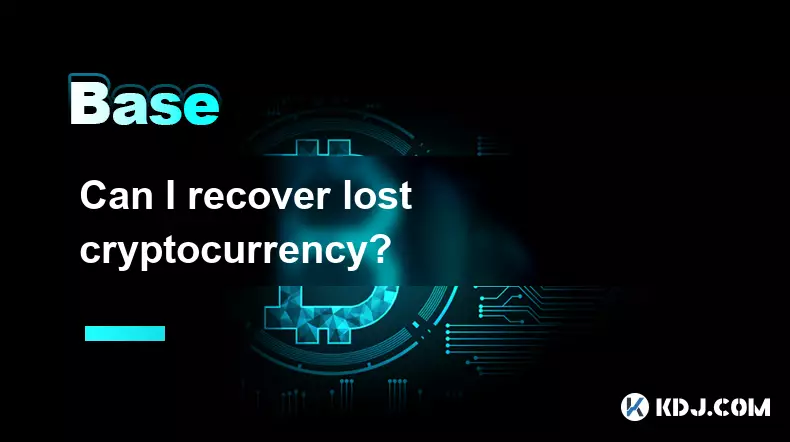
Can I recover lost cryptocurrency?
Sep 25,2025 at 08:18am
Understanding the Nature of Cryptocurrency Loss1. Cryptocurrency operates on decentralized networks, meaning there is no central authority to reverse ...

How can I earn passive income from cryptocurrency?
Sep 23,2025 at 10:18am
Staking Cryptocurrencies for Regular Returns1. Many blockchain networks operate on a proof-of-stake (PoS) consensus mechanism, allowing users to earn ...
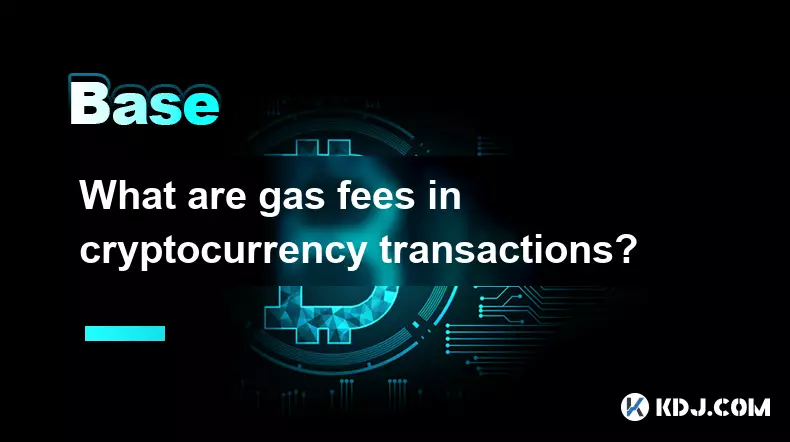
What are gas fees in cryptocurrency transactions?
Sep 26,2025 at 02:00am
Understanding Gas Fees in Blockchain Transactions1. Gas fees are payments made by users to compensate for the computing energy required to process and...
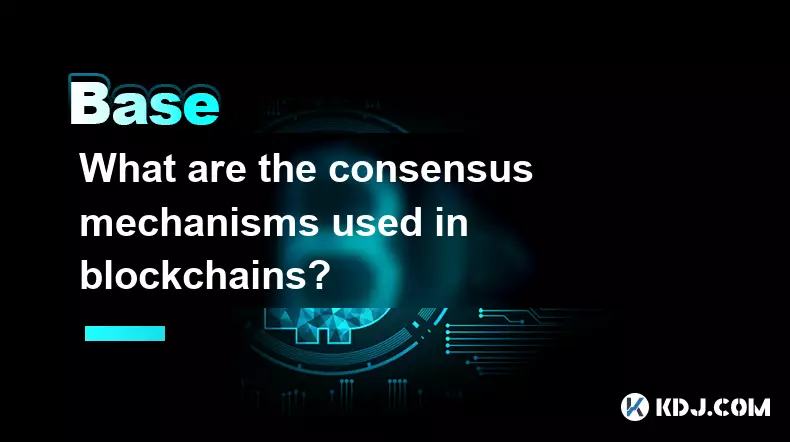
What are the consensus mechanisms used in blockchains?
Sep 24,2025 at 10:00am
Proof of Work and Its Role in Blockchain Security1. Proof of Work (PoW) is one of the earliest consensus mechanisms, first implemented by Bitcoin. Min...

How do cryptocurrencies impact traditional finance?
Sep 26,2025 at 05:54am
Disruption of Centralized Banking Systems1. Cryptocurrencies challenge the authority of central banks by offering decentralized alternatives to fiat c...
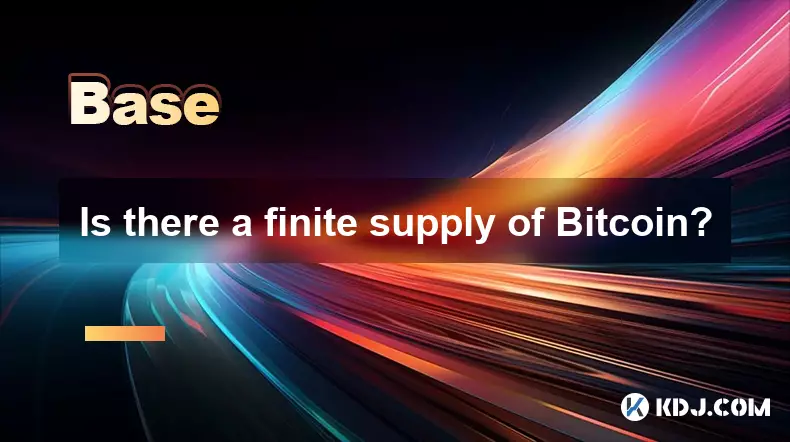
Is there a finite supply of Bitcoin?
Sep 23,2025 at 06:00am
Bitcoin's Fixed Supply Mechanism1. Bitcoin was designed with a hard cap of 21 million coins, making its supply finite and predictable. This limit is h...

Can I recover lost cryptocurrency?
Sep 25,2025 at 08:18am
Understanding the Nature of Cryptocurrency Loss1. Cryptocurrency operates on decentralized networks, meaning there is no central authority to reverse ...

How can I earn passive income from cryptocurrency?
Sep 23,2025 at 10:18am
Staking Cryptocurrencies for Regular Returns1. Many blockchain networks operate on a proof-of-stake (PoS) consensus mechanism, allowing users to earn ...

What are gas fees in cryptocurrency transactions?
Sep 26,2025 at 02:00am
Understanding Gas Fees in Blockchain Transactions1. Gas fees are payments made by users to compensate for the computing energy required to process and...

What are the consensus mechanisms used in blockchains?
Sep 24,2025 at 10:00am
Proof of Work and Its Role in Blockchain Security1. Proof of Work (PoW) is one of the earliest consensus mechanisms, first implemented by Bitcoin. Min...

How do cryptocurrencies impact traditional finance?
Sep 26,2025 at 05:54am
Disruption of Centralized Banking Systems1. Cryptocurrencies challenge the authority of central banks by offering decentralized alternatives to fiat c...

Is there a finite supply of Bitcoin?
Sep 23,2025 at 06:00am
Bitcoin's Fixed Supply Mechanism1. Bitcoin was designed with a hard cap of 21 million coins, making its supply finite and predictable. This limit is h...
See all articles










































































